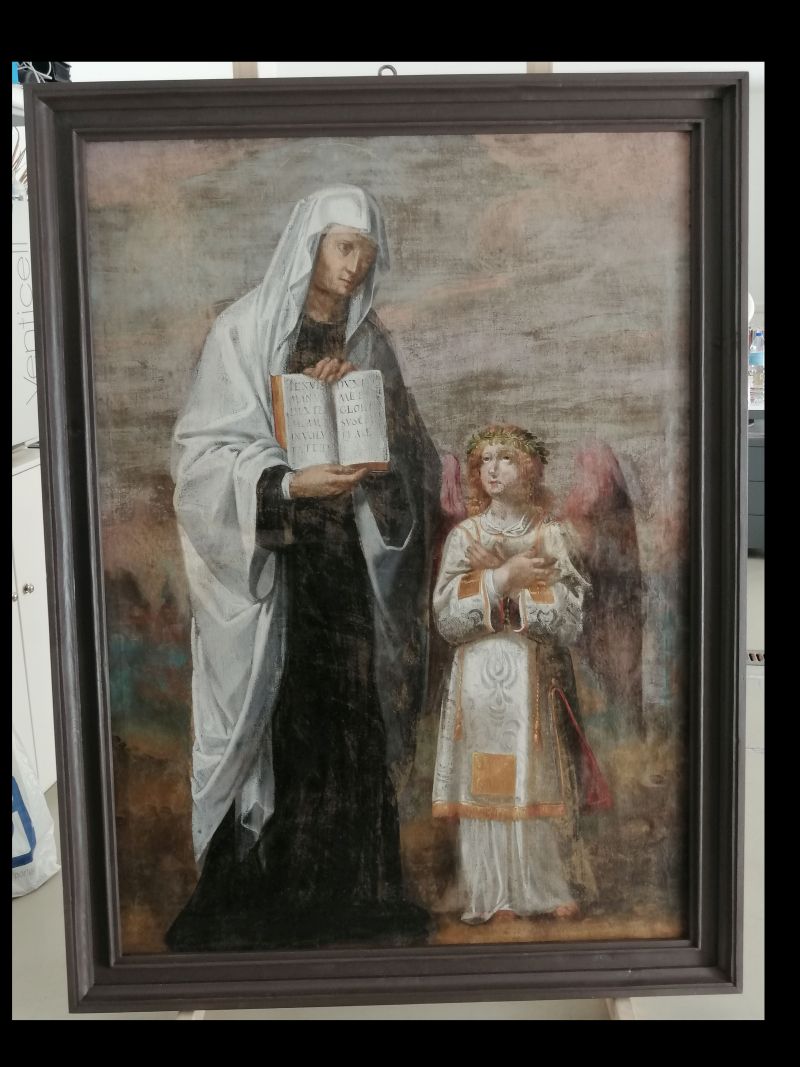The Workshop of Conservation and Restoration of the Municipality of Évora
The Workshop of Conservation and Restoration of the Municipality of Évora was created in 2011 by the need to constitute a specialized unit that, on the one hand, promoted the use of good practices in the conservation of the cultural heritage of the municipality and, on the other hand, managed the conservation and restoration of the mobile and immobile heritage owned by the municipality, or under its tutelage. Its mission is the defence and preservation of the municipality’s cultural and classified assets, respecting the ethical principles of its code of ethics.
In the current year, of the work carried out by the Workshop, we would highlight the interventions made in the hydraulic heritage and in painting on canvas.
As part of the municipal strategy for the valorisation of hydraulic heritage, the Fonte Nova and the Chafariz de São Bartolomeu fountains were both intervened upon. In the case of the former, the work was carried out after it had been damaged following an incident with a vehicle. Compatible materials were used, based on traditional construction techniques, with the use of natural hydraulic lime, lime paste, well graded sand and clay bricks. The work was completed with whitewash.
Two hydraulic assets with distinct anomalies, but with interventions with a common goal: the return of the just heritage dignity, in technical, ethical and aesthetic aspects of restoration, and the consequent enhancement of the surrounding space, promoting the continuity of these places as enjoyable public spaces for the community.
With regard to the conservation of movable assets, the Workshop also carried out interventions in the paintings “Saint Roman Francisca” and “Landscape X”.
Santa Francisca Romana, a 17th-century work belonging to the estate of the Convento dos Remédios, presented anomalies such as gaps in the support, structural fragility, craquelet and detachment of the different layers that compose it. Thus, the work focused particularly on the structural reinforcement of the canvas, the stabilisation of the chromatic layer and the return of the correct reading of the work.
In the case of Rui Macedo’s work, a 20th century work of mixed technique on canvas, the main pathology was detachment, quite marked in some areas, promoted by the diversity of materials used, and by the natural reaction to fluctuations in environmental humidity and temperature. If, on the one hand, industrialisation brought greater artistic freedom to contemporary art, a multiplicity of techniques and materials also brings with it a complexity and a challenge regarding the conservation of the works.
These projects, as well as others undertaken, dignify and enhance the municipal cultural heritage, promoting its safeguarding.
To find out more about this project, please see the attached document:
EVORA. The Conservation and Restoration Workshop

